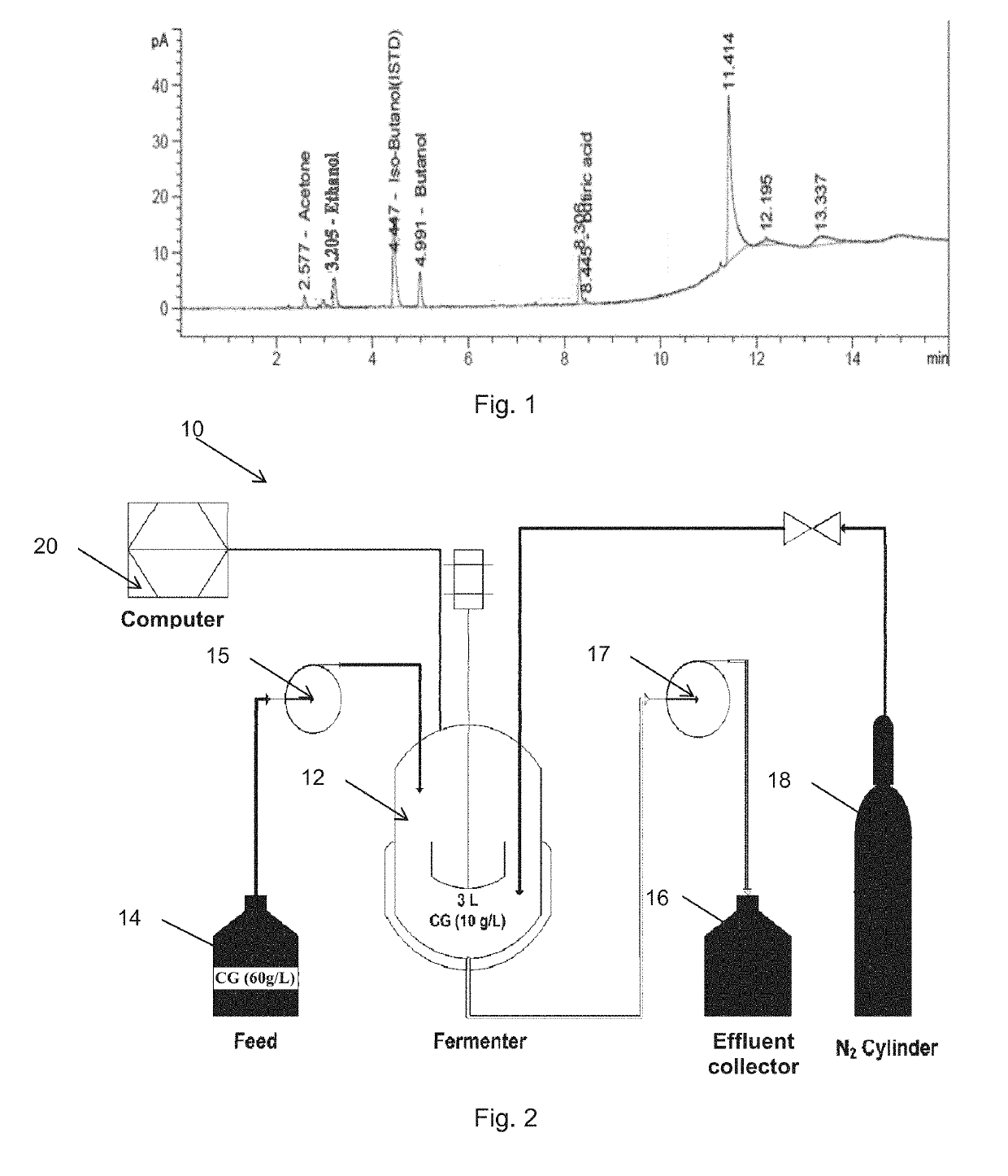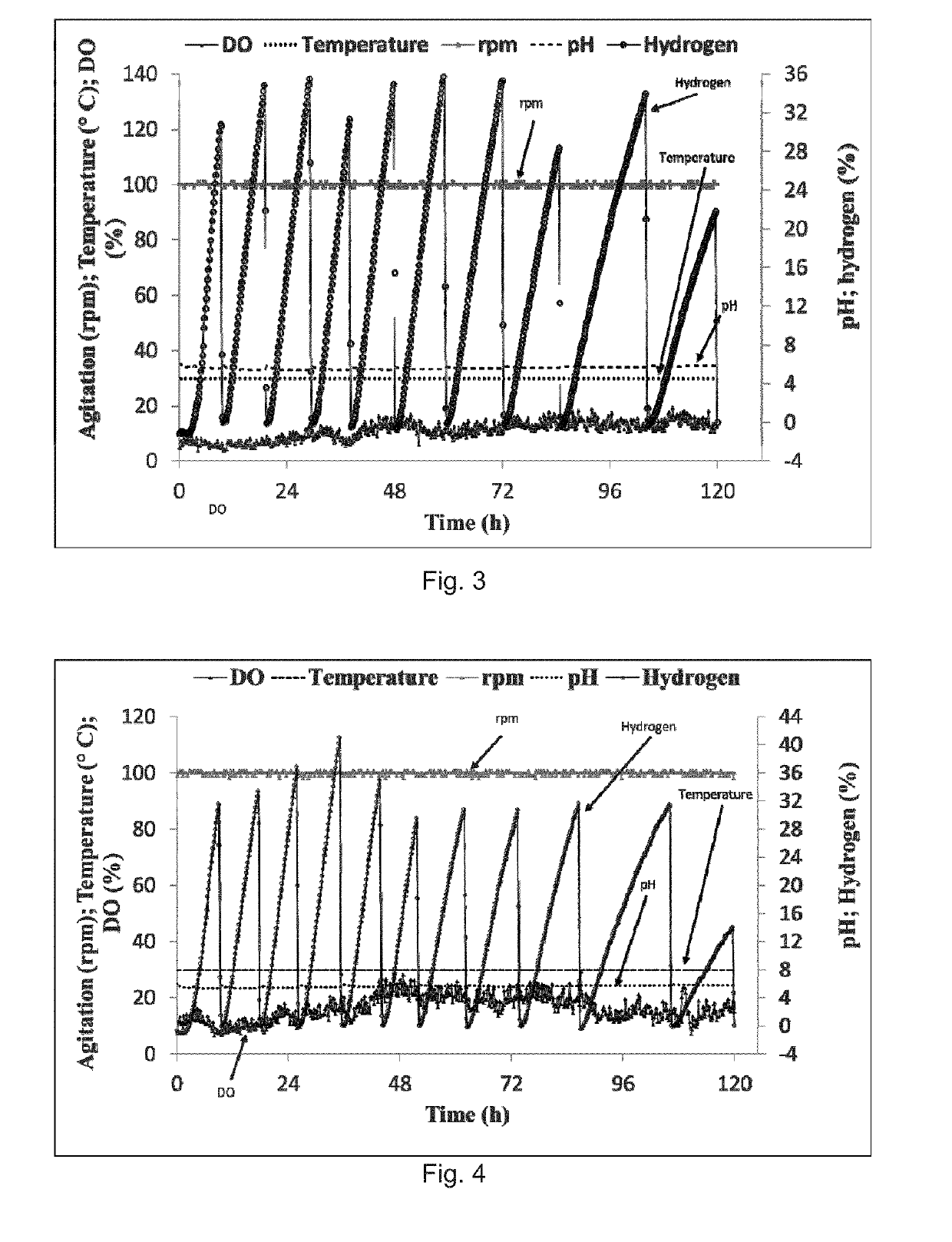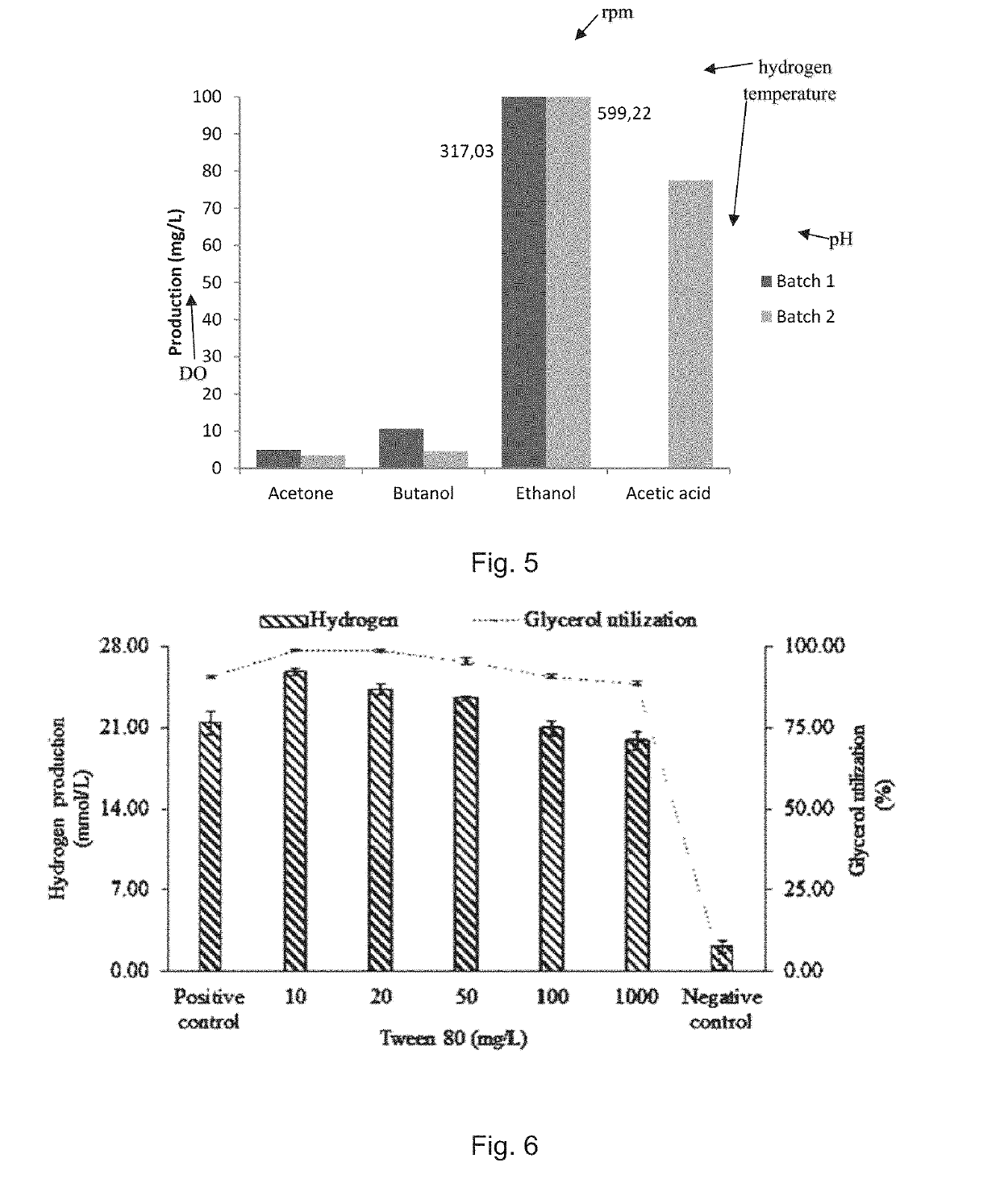Process for hydrogen production from glycerol
a hydrogen gas and glycerol technology, applied in the field of hydrogen gas production process, can solve the problems of high process cost, substrate inhibition is another serious challenge, and the cost of synthetic media components could be as high as 82% of the total cost of such a process, so as to prevent desiccation
- Summary
- Abstract
- Description
- Claims
- Application Information
AI Technical Summary
Benefits of technology
Problems solved by technology
Method used
Image
Examples
example 1
Semi-Continuous Bioprocess for Hydrogen Production from Crude Glycerol
[0085]1.1 Microorganism and Culture Conditions
[0086]A facultative anaerobic bacterium, Enterobacter aerogenes NRRL B-407, was selected for the present study. This known hydrogen producer is a gram-negative rod-shaped bacterium, which was provided by ARS (USDA, USA). For regular propagation of the microorganism a synthetic culture medium composed of glucose (5 g / L), casein peptone (5 g / L), KH2PO4 (2 g / L), MgSO4.7H2O (0.5 g / L) and yeast extract (0.5 g / L), has been used. The same culture medium has also been used for inoculum preparation for the present study. For both purposes, the microorganism was anaerobically grown in 50 mL of aforementioned medium taken in 125 mL serum bottles. Prior to inoculation, the bottles were sterilized and cooled to room temperature. After inoculation, the bottles were incubated by using an orbital shaker incubator operated at 30±1° C. and 150 rpm. About 5% (v / v) of freshly grown microb...
example 2
Surfactant Mediated Enhanced Glycerol Uptake and Hydrogen Production from Biodiesel Waste Using Co-Culture of Enterobacter aerogenes and Clostridium butyricum
[0118]2.1. Microorganisms, Pre-Culture Media and Inoculum Development
[0119]E. aerogenes (NRRL B-407) and C. butyricum (NRRL B-41122) were procured from ARS, USDA, USA. Basal synthetic medium consisting of glucose (10 g / L), casein polypeptone (20 g / L), KH2PO4 (2 g / L), yeast extract (0.5 g / L) and MgSO4.7H2O (0.5 g / L) was used for pre-anaerobic culturing E. aerogenes at 30° C. Modified basal medium supplemented with L-cysteine-HCl.H2O (1 g / L) as a reducing agent was used for pre-culturing C. butyricum anaerobically at 36° C. Different media components were mixed in distilled water to make-up the volume to 47.5 mL. The initial pH was adjusted to 6.5 by using NaOH and 47.5 mL final medium was transferred into serum bottles (125 mL). Medium was sparged with pure N2 gas for 5 min and later sealed using aluminum crimp seals with pre-i...
example 3
Valorization of Crude Glycerol and Eggshell Biowaste as Media Components for Hydrogen Production
[0172]3.1 Crude Glycerol as Substrate.
[0173]The CG used in this study was supplied by Rothsay®, Canada that recycles food and animal by-products for biodiesel production. The composition of CG (by w / w) is given as follows: glycerol (23.6%), carbon (35.9%), nitrogen (3.2%), ash (3.06%), moisture (5.75%) and matter organic non-glycerol (67.56%). Chemicals and reagents used in this example were purchased from Fisher Scientific®, VWR® and Lallemand®. Canada.
[0174]3.2 Microorganisms, Pre-Culture Media and Inoculum Development.
[0175]The co-culture system of Enterobacter aerogenes and Clostridium butyricum considered in this example were purchased from USDA, USA. The basal synthetic medium consisting (w / v) of glucose (1%), casein polypeptone (2.0%), KH2PO4 (0.2%), yeast extract (0.05%) and MgSO4.7H2O (0.05%) maintained anaerobically at pH 6.5 was used for E. aerogenes pre-cultured at 30° C. The ...
PUM
| Property | Measurement | Unit |
|---|---|---|
| concentration | aaaaa | aaaaa |
| concentration | aaaaa | aaaaa |
| concentration | aaaaa | aaaaa |
Abstract
Description
Claims
Application Information
 Login to View More
Login to View More - R&D
- Intellectual Property
- Life Sciences
- Materials
- Tech Scout
- Unparalleled Data Quality
- Higher Quality Content
- 60% Fewer Hallucinations
Browse by: Latest US Patents, China's latest patents, Technical Efficacy Thesaurus, Application Domain, Technology Topic, Popular Technical Reports.
© 2025 PatSnap. All rights reserved.Legal|Privacy policy|Modern Slavery Act Transparency Statement|Sitemap|About US| Contact US: help@patsnap.com



